Relieve bloating and aid your digestive system with these poses from yoga and meditation expert, Swami Purohit (Swamiji)
The starting move
Agnisara
This exercise helps prepare the abdomen for the yoga practice
1. Exhale strongly through your nostrils in order to empty your lungs of air. Then, move your stomach in and out. Do this several times and then inhale.
2. Repeat this three to five times. If you find it difficult or uncomfortable to hold your breath, you can start by doing the exercise while still breathing normally.
Uddiyana bhanda or abdominal lock
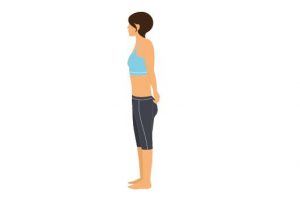
This pose strengthens the abdominal muscles and diaphragm. It also improves digestion, assimilation and elimination
1. While standing, exhale completely through your nostrils. Holding your breath, expand your ribcage as if you were inhaling, but without inhaling at all. This will pull the abdominal muscles inwards and upwards, forming a concavity, or hollow, in your belly. This is Uddiyana Bhanda.
2. Hold for 15 seconds (less if you are uncomfortable) and then release your muscles, allowing them to lower to their original position. Do this up to 10 times, according to your capacity.
Pawan mukta asana
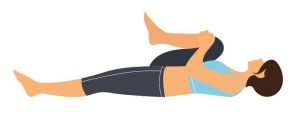
This pose compresses the colon, stimulating the nerves to aid the digestive process
1. Lie on your back with your legs stretched out. Then, bring your right knee up to hug it towards the right side of your ribcage.
2. Meanwhile, press your left leg, still straight, towards the floor and use your hands to pull your right shin downwards. Hold this posture for one or two minutes, whatever is comfortable, and then release gently and repeat on the opposite side.
Marjaryasana or cat posture
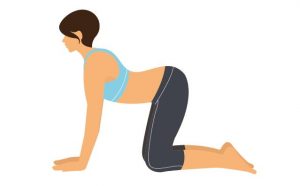
As well as being a great stretch for the back, this posture gently massages the stomach organs, which activates and stimulates them
1. Start on your hands and knees in a ‘tabletop’position. Make sure your knees are set directly below your hips and your wrists, elbows and shoulders are in line and perpendicular to the floor. Place your head in a comfortable position, with your eyes looking at the floor.
2. As you exhale, round your spine toward the ceiling, making sure to keep your shoulders and knees in position. Release your head toward the floor, but don’t force your chin to your chest.
3. Inhale, coming back to neutral ‘tabletop’position on your hands and knees.
Salabhasana or locust pose
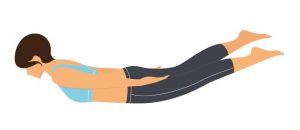
This pose helps a variety of complaints, including fatigue, flatulence, constipation, indigestion and lower back pain
1. Lie on your stomach with your arms by your sides. Engage your glutes and, as you inhale, lift your head, upper torso, arms and legs off the floor. Keep your big toes turned towards each other.
2. Hold for the count of five, and then exhale and release back down to the floor.
Dhanurasana or bow posture
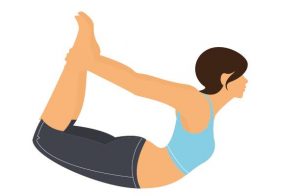
This pose can alleviate constipation but can also improve back pain, respiratory ailments and menstrual cramps
1. In the same position as for the Locust Pose above, bend your knees up and hold your ankles or feet. Engage your glutes and, as you inhale, lift your head, upper torso, arms and legs away from the floor. Gently pull on your ankles or feet to create a bow shape with your body.
2. While in this position, your breath can be used to create a rocking motion which will stimulate the digestive tract. After five inhalations and exhalations, release your legs and arms gently to the ground.
Ashwini mudra
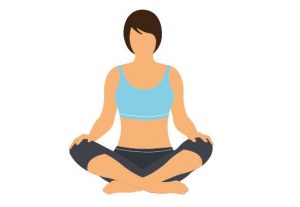
This exercise improves stomach health, and alleviates bloating. This posture also has beneficial results on the hormonal system, particularly on the thyroid gland. It’s thought to balance the nervous, digestive, circulatory and reproductive systems in our bodies
1. Sit in an upright position, but relaxed and breathing normally.
2. Now, contract the muscles in you back passage and hold for 10 seconds. Then release your muscles slowly and breathe. Repeat as many times as is comfortable.
Shavasana or relaxation pose
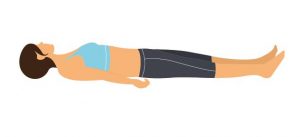
Also known as the ‘corpse pose’, this is the perfect way to end your yoga for digestion sequence. It calms the brain and relaxes the body
1. Lie on your back, with your legs and arms stretched out and relaxed. Release all your muscles and breathe gently and normally.
2. Close your eyes and stay in this position for at least five minutes.
Swami Purohit has more than 40 years’ experience in the yogic disciplines of meditation, hatha yoga and mantra (swamipurohit.com/en)






















